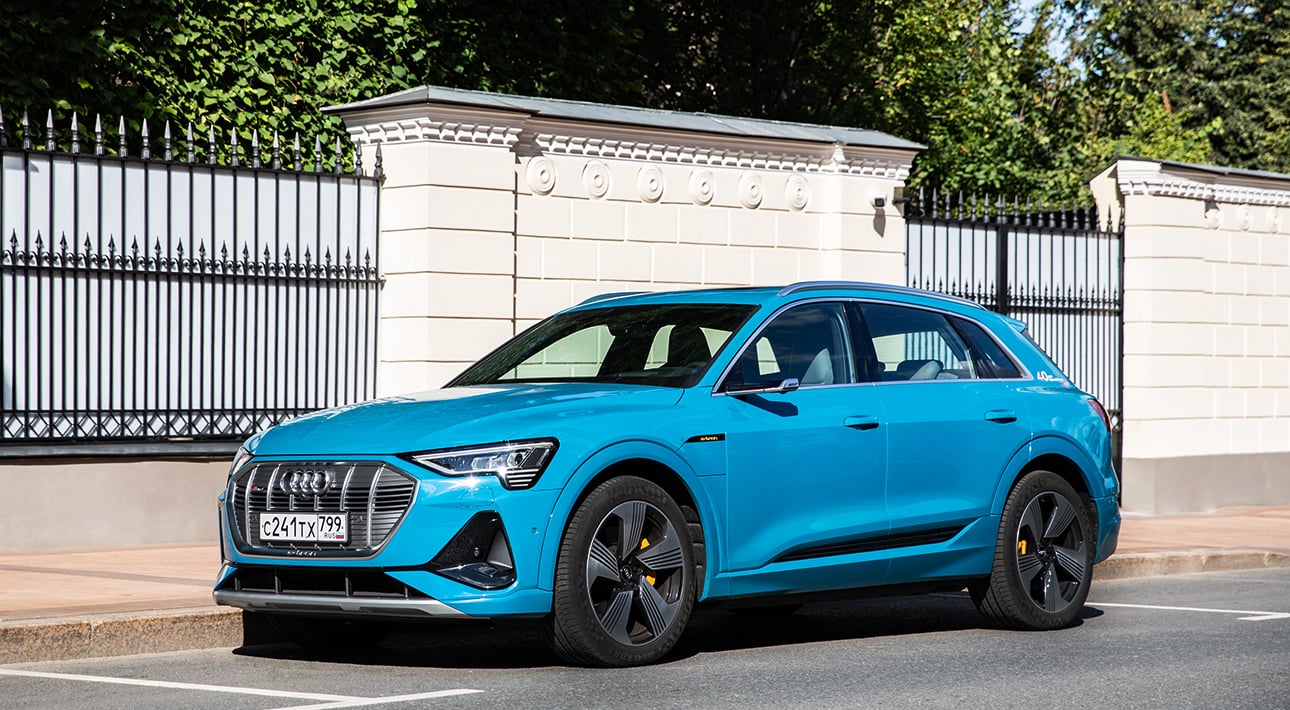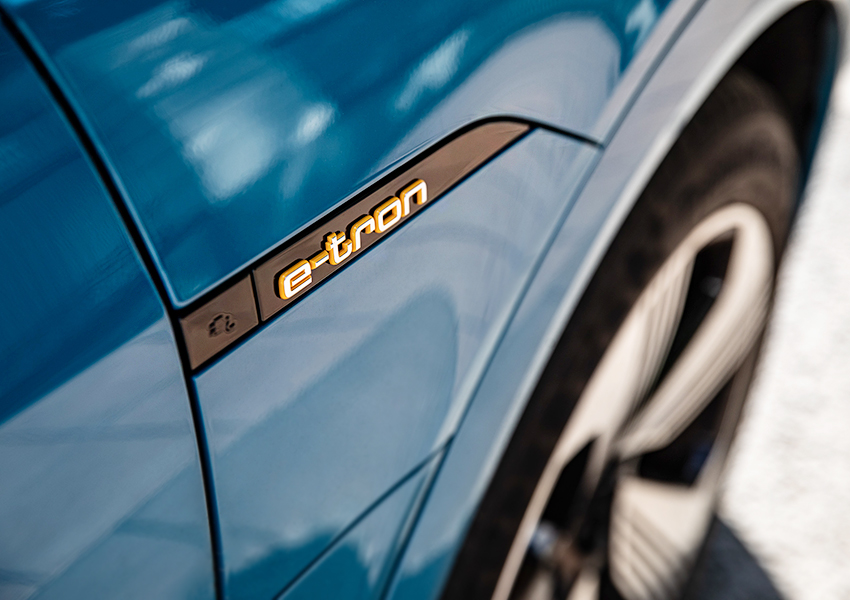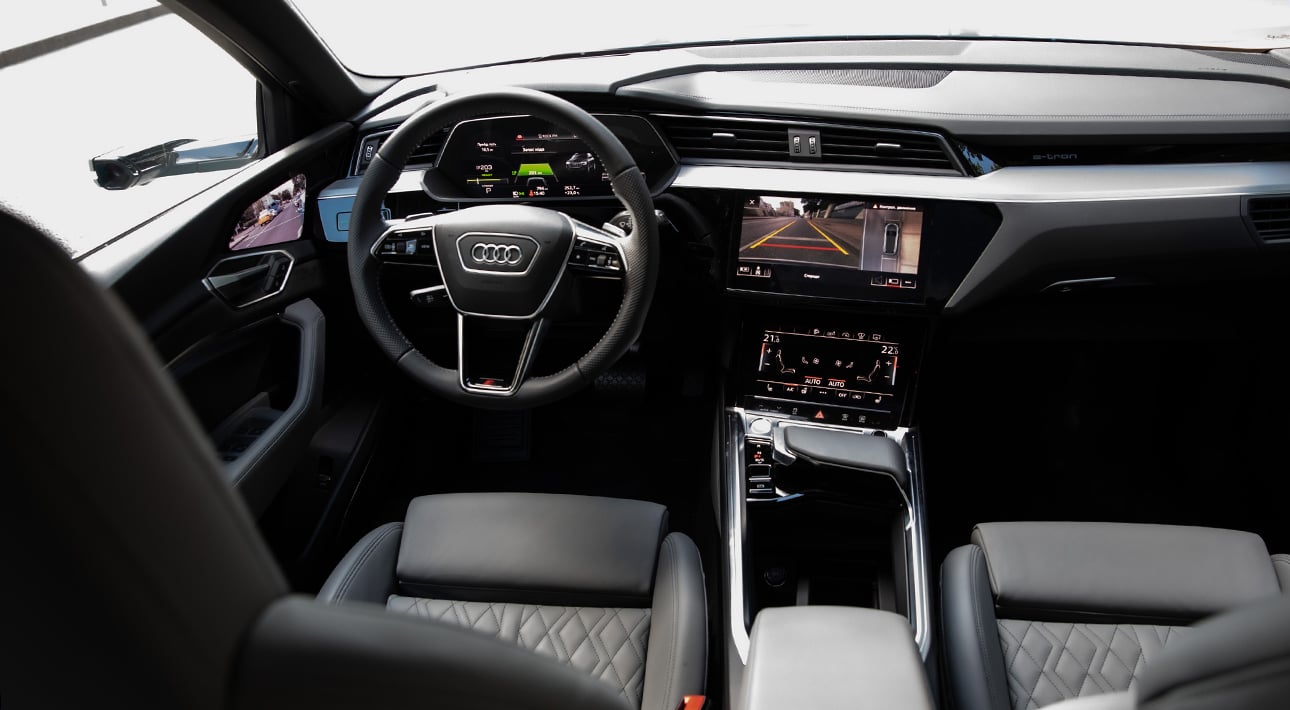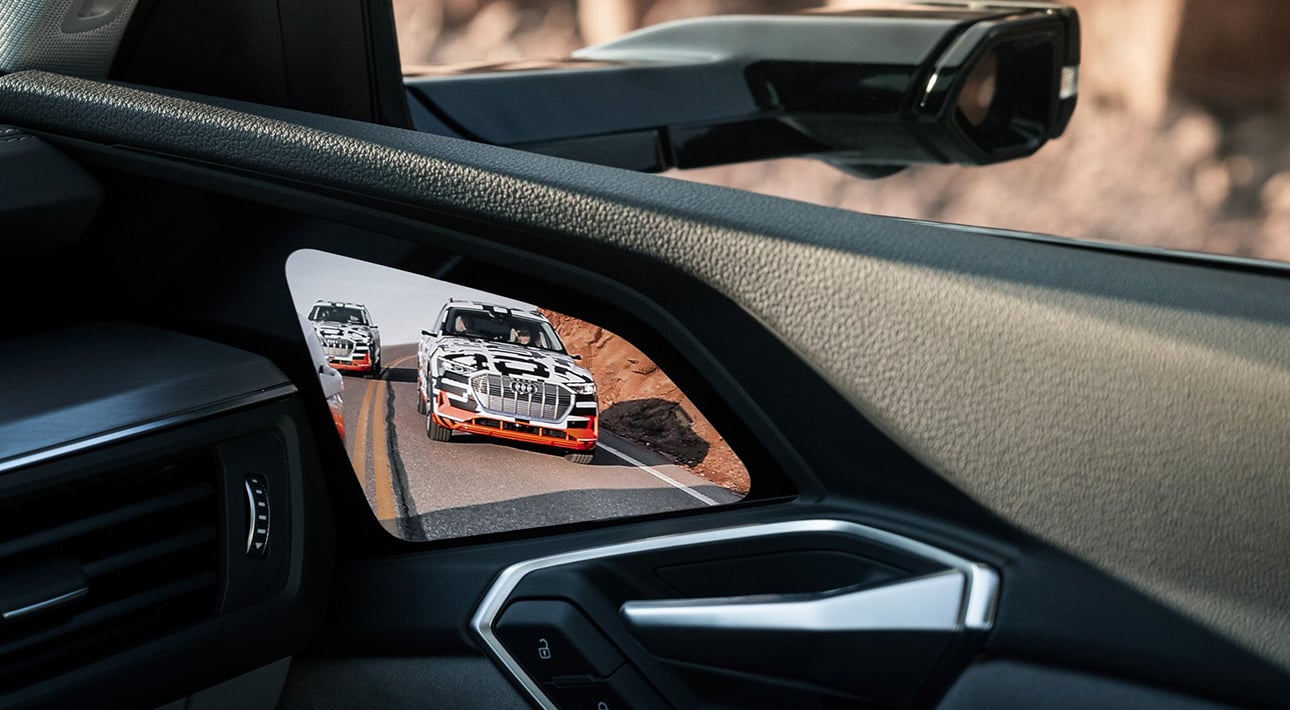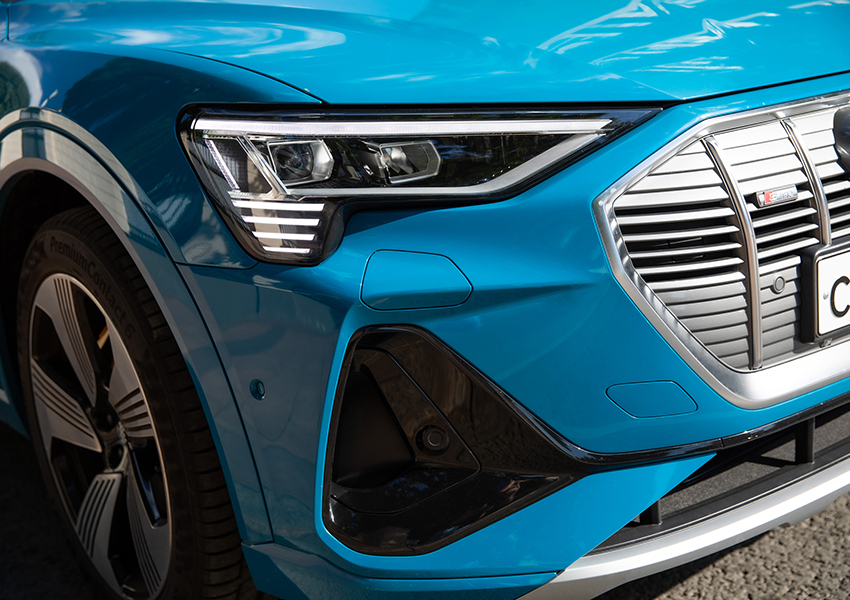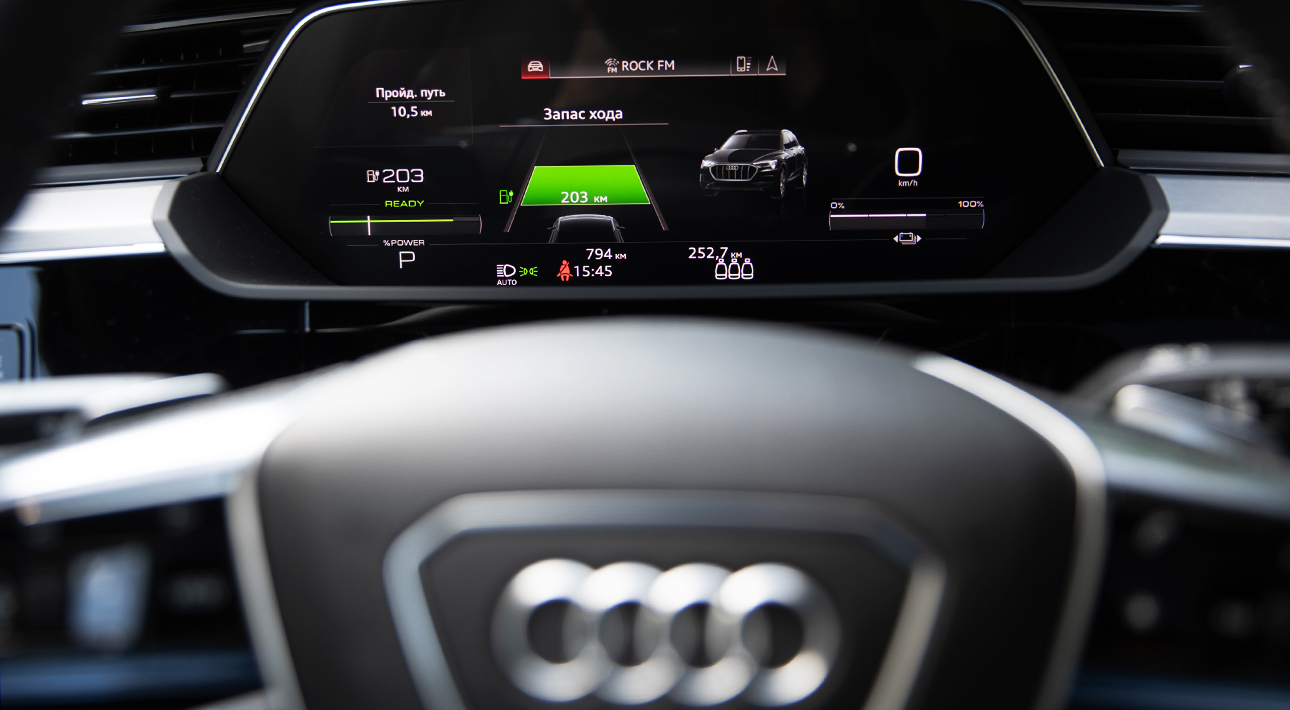On paper (or even on pictures, come to think of it) the Audi e-tron doesn’t look to be the most revolutionary electric car out there. After spending a couple of days with the car in Moscow, though, I came away more than a little bit impressed.
I had traveled no more than 500 meters in the e-tron before a couple in another German-built car pulled up alongside and gestured to open the window. They then proceeded to enthusiastically ask questions about the car and how I was liking it. I decided to go for the honest response that I didn’t really know yet, and that it wasn’t actually my car so no congratulations were in order. The fact that the e-tron rather stands out on the road is probably in no small part due to the absence of wing mirrors. Instead, it has two cameras on each side that look backwards, fitted to stalks not unlike how a crab’s eyes are attached to its body. It’s a little bit peculiar. But more on those later.
The e-tron is Audi’s first fully electric vehicle and they’ve decided to start with the SUV segment. It’s got a 95 kWh battery and two electric motors which provide as much as 408 horsepower combined, which are pretty standard specs for an upmarket “EV” these days. But, lack of proper wing mirrors aside, Audi has decided to go with very familiar and unthreatening styling for the e-tron. It looks like just another Audi SUV for the most part. A sensible choice, probably, as not every potential electric car buyer necessarily wants to stand out more than they need to.





